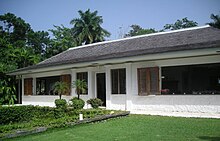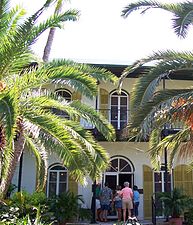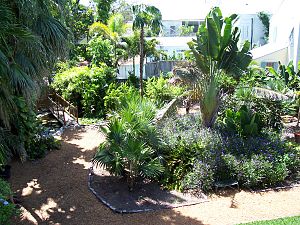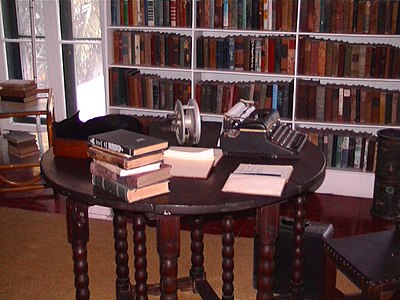
Hello. I'm writer Antoinette Beard/Sorelle Sucere. Welcome to my blog, which is dedicated to all the loving, intelligent, brave, wise, strong, gentle, kind, sweet-and-geeky, humble-and-patient, --- whether they have hands, paws, hooves, wings, fins, or even, --- yes, flippers, --- and to all eager readers and hard-working authors, everywhere.
Meanwhile...

I love all creatures. I consider them, all of them, to be sentient beings... I write thrillers, fantasy, mysteries, gothic horror, romantic adventure, occult, Noir, westerns and various types of short stories. I also re-tell traditional folk tales and make old fairy tales carefully cracked. I'm often awake very early in the morning. A cuppa, and fifteen minutes later I'm usually writing something. ;)
Wednesday, August 30, 2017
Monday, August 21, 2017
Sunday, August 20, 2017
Saturday, August 19, 2017
Friday, August 18, 2017
James Bond Villain Deaths, - [1962-2008]...
...Obbjob's death was the most creative and spectacular, I thought, --- electrocution by metal-brimmed hat via high voltage wire!!!
Jane Seymour, - Exquisite in, "Live & Let Die"...
...Her movie debut, as the gorgeous and psychically gifted Soltaire.
Carly Simon Sings, - "Nobody Does It Better," - [From "The Spy Who Loved Me"]...
I think that this is her best performance of this incredibly sexy song!!!
Thursday, August 17, 2017
James Bond, --- Part 2...
Television
In 1954 CBS paid Ian Fleming $1,000 ($8,918 in 2016 dollars[92]) to adapt his novel Casino Royale into a one-hour television adventure as part of its Climax! series.[93] The episode aired live on 21 October 1954 and starred Barry Nelson as "Card Sense" James Bond and Peter Lorre as Le Chiffre.[94] The novel was adapted for American audiences to show Bond as an American agent working for "Combined Intelligence", while the character Felix Leiter—American in the novel—became British onscreen and was renamed "Clarence Leiter".[95]
In 1973 a BBC documentary Omnibus: The British Hero featured Christopher Cazenove playing a number of such title characters (e.g. Richard Hannay and Bulldog Drummond). The documentary included James Bond in dramatised scenes from Goldfinger—notably featuring 007 being threatened with the novel's circular saw, rather than the film's laser beam—and Diamonds Are Forever.[96] In 1991 a TV cartoon series James Bond Jr. was produced with Corey Burton in the role of Bond's nephew, also called James Bond.[97]
Radio
In 1956 the novel Moonraker was adapted for broadcast on South African radio, with Bob Holness providing the voice of Bond.[98] According to The Independent, "listeners across the Union thrilled to Bob's cultured tones as he defeated evil master criminals in search of world domination".[99]
The BBC have adapted five of the Fleming novels for broadcast: in 1990 You Only Live Twice was adapted into a 90-minute radio play for BBC Radio 4 with Michael Jayston playing James Bond. The production was repeated a number of times between 2008 and 2011.[100] On 24 May 2008 BBC Radio 4 broadcast an adaptation of Dr. No. The actor Toby Stephens, who played Bond villain Gustav Graves in the Eon Productions version of Die Another Day, played Bond, while Dr. No was played by David Suchet.[101] Following its success, a second story was adapted and on 3 April 2010 BBC Radio 4 broadcast Goldfinger with Stephens again playing Bond.[102] Sir Ian McKellen was Goldfinger and Stephens' Die Another Day co-star Rosamund Pike played Pussy Galore. The play was adapted from Fleming's novel by Archie Scottney and was directed by Martin Jarvis.[103] In 2012 the novel From Russia, with Love was dramatized for Radio 4; it featured a full cast again starring Stephens as Bond.[104] In May 2014 Stephens again played Bond, in On Her Majesty's Secret Service, with Alfred Molina as Blofeld, and Joanna Lumley as Irma Bunt.[105]
Comics
Main articles: James Bond (comic strip) and James Bond comic books
In 1957 the Daily Express approached Ian Fleming to adapt his stories into comic strips, offering him £1,500 per novel and a share of takings from syndication.[106] After initial reluctance, Fleming, who felt the strips would lack the quality of his writing, agreed.[107] To aid the Daily Express in illustrating Bond, Fleming commissioned an artist to create a sketch of how he believed James Bond looked. The illustrator, John McLusky, however, felt that Fleming's 007 looked too "outdated" and "pre-war" and changed Bond to give him a more masculine look.[108] The first strip, Casino Royalewas published from 7 July 1958 to 13 December 1958[109] and was written by Anthony Hern and illustrated by John McLusky.[110]
Most of the Bond novels and short stories have since been adapted for illustration, as well as Kingsley Amis's Colonel Sun; the works were written by Henry Gammidge or Jim Lawrence with Yaroslav Horak replacing McClusky as artist in 1966.[109] After the Fleming and Amis material had been adapted, original stories were produced, continuing in the Daily Express and Sunday Express until May 1977.[108]
Several comic book adaptations of the James Bond films have been published through the years: at the time of Dr. No's release in October 1962, a comic book adaptation of the screenplay, written by Norman J. Nodel, was published in Britain as part of the Classics Illustrated anthology series.[111]It was later reprinted in the United States by DC Comics as part of its Showcase anthology series, in January 1963. This was the first American comic book appearance of James Bond and is noteworthy for being a relatively rare example of a British comic being reprinted in a fairly high-profile American comic. It was also one of the earliest comics to be censored on racial grounds (some skin tones and dialogue were changed for the American market).[112][111]
With the release of the 1981 film For Your Eyes Only, Marvel Comics published a two-issue comic book adaptation of the film.[113][114] When Octopussy was released in the cinemas in 1983, Marvel published an accompanying comic;[111] Eclipse also produced a one-off comic for Licence to Kill, although Timothy Dalton refused to allow his likeness to be used.[115] New Bond stories were also drawn up and published from 1989 onwards through Marvel, Eclipse Comics and Dark Horse Comics.[111][114]
Films
Main article: James Bond in film
The Eon Productions films
In 1962 Eon Productions, the company of Canadian Harry Saltzman and American Albert R. "Cubby" Broccoli, released the first cinema adaptation of an Ian Fleming novel, Dr. No, featuring Sean Connery as 007.[116] Connery starred in a further four films before leaving the role after You Only Live Twice,[117] which was taken up by George Lazenby for On Her Majesty's Secret Service.[118] Lazenby left the role after just one appearance and Connery was tempted back for his last Eon-produced film Diamonds Are Forever.[119]
In 1973 Roger Moore was appointed to the role of 007 for Live and Let Die and played Bond a further six times over twelve years before being replaced by Timothy Dalton for two films. After a six-year hiatus, during which a legal wrangle threatened Eon's productions of the Bond films,[120] Irish actor Pierce Brosnan was cast as Bond in GoldenEye, released in 1995; he remained in the role for a total of four films, before leaving in 2002. In 2006, Daniel Craig was given the role of Bond for Casino Royale, which rebooted the series.[121] The twenty-third Eon produced film, Skyfall, was released on 26 October 2012.[122] The series has grossed almost $7 billion to date, making it the third-highest-grossing film series(behind Harry Potter and the films of the Marvel Cinematic Universe),[123] and the single most successful adjusted for inflation.[124]
James Bond, --- Part 1...
Ian Fleming created the fictional character of James Bond as the central figure for his works. Bond is an intelligence officer in the Secret Intelligence Service, commonly known as MI6. Bond is known by his code number, 007 (pronounced "double-oh-seven"), and was a Royal Naval Reserve Commander.
Fleming based his fictional creation on a number of individuals he came across during his time in the Naval Intelligence Division during World War II, admitting that Bond "was a compound of all the secret agents and commando types I met during the war".[2] Among those types were his brother, Peter, who had been involved in behind-the-lines operations in Norway and Greece during the war.[3] Aside from Fleming's brother, a number of others also provided some aspects of Bond's make up, including Conrad O'Brien-ffrench, Patrick Dalzel-Job and Bill "Biffy" Dunderdale.[2]
The name James Bond came from that of the American ornithologist James Bond, a Caribbean bird expert and author of the definitive field guide Birds of the West Indies. Fleming, a keen birdwatcher himself, had a copy of Bond's guide and he later explained to the ornithologist's wife that "It struck me that this brief, unromantic, Anglo-Saxon and yet very masculine name was just what I needed, and so a second James Bond was born".[4] He further explained that:
When I wrote the first one in 1953, I wanted Bond to be an extremely dull, uninteresting man to whom things happened; I wanted him to be a blunt instrument ... when I was casting around for a name for my protagonist I thought by God, [James Bond] is the dullest name I ever heard.— Ian Fleming, The New Yorker, 21 April 1962[5]
On another occasion, Fleming said: "I wanted the simplest, dullest, plainest-sounding name I could find, 'James Bond' was much better than something more interesting, like 'Peregrine Carruthers'. Exotic things would happen to and around him, but he would be a neutral figure—an anonymous, blunt instrument wielded by a government department."[6]

Hoagy Carmichael—Fleming's view of James Bond
Fleming decided that Bond should resemble both American singer Hoagy Carmichael and himself[7] and in Casino Royale, Vesper Lyndremarks, "Bond reminds me rather of Hoagy Carmichael, but there is something cold and ruthless." Likewise, in Moonraker, Special BranchOfficer Gala Brand thinks that Bond is "certainly good-looking ... Rather like Hoagy Carmichael in a way. That black hair falling down over the right eyebrow. Much the same bones. But there was something a bit cruel in the mouth, and the eyes were cold."[7]
Fleming endowed Bond with many of his own traits, including sharing the same golf handicap, the taste for scrambled eggs and using the same brand of toiletries.[8] Bond's tastes are also often taken from Fleming's own as was his behaviour,[9] with Bond's love of golf and gambling mirroring Fleming's own. Fleming used his experiences of his espionage career and all other aspects of his life as inspiration when writing, including using names of school friends, acquaintances, relatives and lovers throughout his books.[2]
It was not until the penultimate novel, You Only Live Twice, that Fleming gave Bond a sense of family background. The book was the first to be written after the release of Dr. No in cinemas and Sean Connery's depiction of Bond affected Fleming's interpretation of the character, to give Bond both a sense of humour and Scottish antecedents that were not present in the previous stories.[10] In a fictional obituary, purportedly published in The Times, Bond's parents were given as Andrew Bond, from the village of Glencoe, Scotland, and Monique Delacroix, from the canton of Vaud, Switzerland.[11] Fleming did not provide Bond's date of birth, but John Pearson's fictional biography of Bond, James Bond: The Authorized Biography of 007, gives Bond a birth date on 11 November 1920,[12] while a study by John Griswold puts the date at 11 November 1921.[13]
Novels and related works
Main article: List of James Bond novels and short stories
Ian Fleming novels
Whilst serving in the Naval Intelligence Division, Fleming had planned to become an author[15] and had told a friend, "I am going to write the spy story to end all spy stories."[2] On 17 February 1952, he began writing his first James Bond novel, Casino Royale, at his Goldeneye estate in Jamaica,[16] where he wrote all his Bond novels during the months of January and February each year.[17] He started the story shortly before his wedding to his pregnant girlfriend, Ann Charteris, in order to distract himself from his forthcoming nuptials.[18]
After completing the manuscript for Casino Royale, Fleming showed the manuscript to his friend (and later editor) William Plomer to read. Plomer liked it and submitted it to the publishers, Jonathan Cape, who did not like it as much. Cape finally published it in 1953 on the recommendation of Fleming's older brother Peter, an established travel writer.[17] Between 1953 and 1966, two years after his death, twelve novels and two short-story collections were published, with the last two books – The Man with the Golden Gun and Octopussy and The Living Daylights – published posthumously.[19] All the books were published in the UK through Jonathan Cape.
|
|
Wednesday, August 16, 2017
"ME-ow," --- or maybe, "RRR-roar!!!...

Yes, the hero of my "Sexiest Jewels" series is a cat burglar.
Wednesday, August 9, 2017
Tuesday, August 8, 2017
The Ernest Hemingway House In Key West, - [I've been there and, yes, it is special]...

Ernest Hemingway with sons and kittens at Finca Vigia, Cuba, ca. 1942 (JFK Library). The photo confirms son Patrick's memory of Hemingway's cats in Cuba.
This was Hemingway's home from 1931 to 1939, although he retained title to the home until he died.[1] It is a private, for-profit landmark and tourist attraction now populated by six- and seven-toed cats that are descendants of Hemingway's cats. The author's second son, Patrick, who lived in the house, stated in a 1994 interview in the Miami Herald's "Tropic" that his father had peacocks in Key West and that he owned cats in Cuba. However, a photo on display at the Hemingway Home in Key West shows Patrick and his younger brother, Gregory, in front of the Cuban water jar near the swimming pool, and Gregory is holding a white cat named Snow White. In addition to the photo showing Patrick and Gregory with Snow White, Hemingway's wife, Pauline, wrote the following in a January 22, 1937, letter to Hemingway (who was staying at the Barclay's Hotel in New York City): "Snow White has become his (G's) fox fur that walks. Esther is having the same old cat looing troubles, with discussed alternatives of 1) getting little female, 2) letting him out and NOT worrying, which turns into letting him out and worrying, 3) castrating, 4) putting ad in paper asking for return of brown, blue-eyed cat with reward."
Descendants of Hemingway's original cats continue to live on the premises. In 2009, the cats became the subject of federal litigation after a museum visitor expressed concern about the cats' welfare. United States Department of Agriculture investigators visited the museum and subsequently ordered the museum to take measures to tag the cats for identification and to shelter them.[4] The museum fought the regulations in court but lost their case in the court of appeals, which ruled that the cats "substantially affect" interstate commerce and thus are protected by the Animal Welfare Act of 1966.[5] The house does not sell cats but does continue a selective breeding program for them.
It was in this house that Hemingway did some of his best work, including the short story classics "The Snows of Kilimanjaro" and "The Short Happy Life of Francis Macomber," his novel To Have And Have Not, and the non-fiction work Green Hills of Africa.
The house stands at an elevation of 16 feet (4.9 m) above sea level but is still the second-highest site on the island. It was originally built in 1851 by Asa Tift, a marine architect and salvage wrecker, in a French Colonial estate style,[6] out of limestone quarried from the site. As testament to its construction and location, it survived many hurricanes, and the deep basement remained, and still remains, dry.[7]
The Hemingways had spent the previous three years living in Key West but had rented housing, the last being a two-story home at 1301 Whitehead Street.[8][9] Pauline (the writer's second wife) found the Tift house for sale at a tax auction in 1931. Pauline's Uncle Gus bought it for her and Ernest, for $8,000 cash, and presented it to them as a wedding gift.[10]
Features[edit]
The house was one of the first on the island to be fitted with indoor plumbing and the first on the island to have an upstairs bathroom with running water, fed from a rain cistern on the roof. Also notable are a built-in fireplace and the first swimming pool in Key West, which was the only pool within 100 miles (160 km) in the late 30s. In November 1936, in an interview with the Key West Citizen, Hemingway showed the reporter the location he had planned for a pool. It was Pauline Hemingway, though, who spent $20,000 (equivalent in 2013 to $330,000) to have the deep well-fed pool built for her husband while he was away as a Spanish Civil War correspondent in 1938. When Hemingway returned, he was unpleasantly surprised by the cost and exclaimed, "Well, you might as well have my last cent." This penny is embedded in concrete today near the pool.[8]
In 1937, when Ernest was in Spain, Pauline hired Ernest's friend, driver, and handyman, Toby Bruce, to build the high brick wall that surrounds the house today.[11]
Another of Hemingway's loves was boxing. He set up a ring in his yard and paid local fighters to box with him. He also refereed matches at Blue Heaven, then a saloon but now a restaurant, at 769 Thomas Street.[citation needed]
Hemingway converted a urinal obtained after a renovation at Sloppy Joe's bar into a water fountain in the yard, where it remains a prominent feature at the home, filled with water from the large Cuban jar and serving as one of many water sources for the grounds' cats.[1] The grounds of the house are maintained as a garden, with many tropical plants installed after Hemingway moved to Cuba. In Hemingway's time, the grounds, like the island, were sparse and dry due to lack of water that only came later, with the Navy's installation of a water line from mainland.
The house was originally purchased for $8,000. After Hemingway's death in 1961, the house was sold by his widow, Mary, to Mrs. Bernice Dickson, the founder of the museum. A prominent feature of the dining room is a Murano glass chandelier. Upstairs, a book display shows books owned by Hemingway while he lived in Key West—including Red Pete the Ruthless by C.M. Bennett. Clearly visible is the inscription, "Given to Hemingway—1936," from Sister Ida, a nun at the local St. Joseph's convent. His writer's studio in the second floor of a free-standing carriage house, and where he stayed briefly (in the 1950s) when visiting from his home in Cuba, was once connected by a second story walkway to the master bedroom. The walkway, shown in pictures from archives, has not been reconstructed.
A garage on the property, with a caretaker's apartment on the second floor, was built to house Ernest's Buick automobile.
In 1988, the house was a filming location of the 16th James Bond movie Licence to Kill. In the scene, Bond resigns from the secret service and then flees through the garden. In protection of M, the fictional guards watch from the Key West Light across the street.
Gallery[edit]
- One of the many Polydactyl cats that live on the property
Subscribe to:
Posts (Atom)










